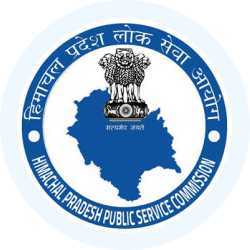Literacy Rate of Himachal Pradesh (1951-2011) | HPPSC HPAS Preparation - HPPSC HPAS (Himachal Pardesh) PDF Download
| Table of contents |

|
| Introduction |

|
| Low Literacy Rate at the Time of Independence |

|
| Role of the Himachal Pradesh State Education Department |

|
| Gradual Increase in Literacy Rate |

|
| Male vs. Female Literacy Rate |

|
Introduction
After its establishment post-April 1948, the Himachal Pradesh State Education Department played a crucial role in shaping the education landscape of the region. At the time of India's independence, the literacy rate in Himachal Pradesh was alarmingly low, around 7 percent. However, with focused educational policies and initiatives by successive governments, the literacy rate steadily improved. By the 2011 census, Himachal Pradesh had achieved a literacy rate of 83.78 percent, reflecting a significant transformation.
Low Literacy Rate at the Time of Independence
- Initial Literacy Levels:
- In 1947, around the time of independence, the literacy rate in Himachal Pradesh was extremely low, approximately 7 percent.
- This indicates that only a small portion of the population could read or write, highlighting the lack of educational infrastructure.
- The region, being largely rural and hilly, faced challenges like inaccessibility to schools, lack of trained teachers, and minimal awareness about the importance of education.
Role of the Himachal Pradesh State Education Department
- The Himachal Pradesh State Education Department was set up after the region came into existence post-April 1948.
- The department focused on addressing the low literacy rate by initiating educational programs and making education more accessible to all.
- A significant emphasis was laid on rural education, bringing schools closer to remote areas.
Gradual Increase in Literacy Rate
Government Initiatives:- The state government introduced several education programs, with a focus on primary and secondary education.
- Initiatives such as building schools in rural areas, offering incentives like free textbooks, and providing mid-day meals encouraged more children, especially girls, to attend school.
- Training programs for teachers were also organized to improve the quality of education being imparted.
- The literacy rate was recorded at just 7.98%.
- The literacy percentage was reflective of a largely uneducated society, with limited access to formal education.
1961:
- By this time, the literacy rate had increased to 21.33%, showing a gradual improvement.
- This marked the beginning of educational outreach programs, aimed at covering a larger population, including women and rural communities.
1971:
- The literacy rate stood at 31.96%.
- This was a significant improvement as more schools were opened in rural regions and awareness regarding education began to grow.
1981:
- The literacy rate reached 42.48%.
- At this stage, nearly half of the state's population had access to basic education.
- This period saw efforts to bridge the gender gap in literacy.
1991:
- The literacy rate climbed to 63.86%.
- With more robust educational policies in place, a majority of the state's population became literate, further reducing the urban-rural and male-female literacy divide.
2001:
- The literacy rate surged to 77.13%.
- Education became a core focus of the state’s development agenda, leading to extensive enrollment campaigns.
2011:
- Himachal Pradesh achieved a literacy rate of 83.78%.
- This was a remarkable achievement, as it showcased the state’s success in improving access to education for both men and women.
Male vs. Female Literacy Rate
Male Literacy Rate:- In 2011, the male literacy rate was 90.83%, reflecting significant progress in men’s education.
- Throughout the years, men had better access to education due to societal norms and relatively easier access to schools.
Female Literacy Rate:
- The female literacy rate in 2011 stood at 76.60%, showing considerable improvement but still lagging behind men.
- Earlier, social barriers like gender roles, domestic responsibilities, and lack of schools for girls limited female education.
- The gap, though reduced over the years, emphasizes the need for further focus on promoting education for girls.
Conclusion
The journey of Himachal Pradesh from a mere 7.98% literacy rate in 1951 to 83.78% in 2011 demonstrates the positive impact of sustained educational efforts. With focused governmental policies, increased infrastructure, and public awareness, the state has witnessed remarkable progress in literacy, though challenges such as gender disparity in education still require attention. The upward trend serves as an inspiration for continued growth in educational standards.
FAQs on Literacy Rate of Himachal Pradesh (1951-2011) - HPPSC HPAS Preparation - HPPSC HPAS (Himachal Pardesh)
| 1. हिमाचल प्रदेश की साक्षरता दर 1951 से 2011 तक कैसे बदलती रही ? |  |
| 2. हिमाचल प्रदेश में साक्षरता दर में कौन-कौन से कारक प्रभावित करते हैं ? |  |
| 3. हिमाचल प्रदेश में साक्षरता दर में महिला साक्षरता का क्या योगदान है ? |  |
| 4. हिमाचल प्रदेश में साक्षरता दर को बढ़ाने के लिए सरकार ने कौन-कौन से उपाय किए हैं ? |  |
| 5. 2011 की जनगणना के अनुसार हिमाचल प्रदेश की साक्षरता दर की तुलना अन्य राज्यों से कैसे की जा सकती है ? |  |

|
Explore Courses for HPPSC HPAS (Himachal Pardesh) exam
|

|
















